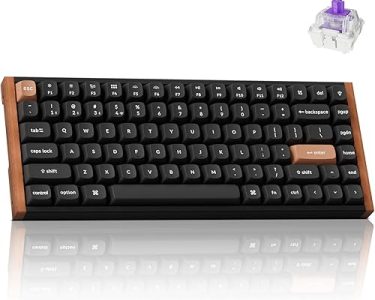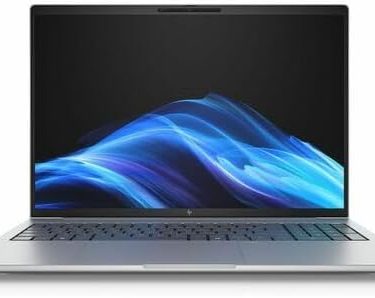The new low-end Qualcomm Snapdragon X CPU powers the Lenovo IdeaPad Slim 3x, an ARM-based notebook. Thanks to Snapdragon, this device boasts an NPU for the dazzling Copilot+ PC features that Microsoft is delivering, as well as exceptional battery life for its class.
I haven’t seen a Snapdragon X Copilot+ PC with such a low launch price before. The design and construction quality are also good. However, at $599 rather than $749, the tradeoffs made here would seem much more justified. Nevertheless, there is no doubt that this system outperforms the Intel version.
The main issue is that this laptop has slower internals than previous models and was released a year after the initial Snapdragon X Copilot+ PCs. Copilot+ PCs, which have been available for months and are often on sale for a comparable price, are competing with this system at its initial retail price.
Specification
I first tested Asus’ featherlight $1200 Asus ZenBook A14, which has the same lower-end Qualcomm Snapdragon X1-26-100 CPU as the Lenovo IdeaPad Slim 3x. This $749 machine makes a lot more sense than that $1200 one. (At first, Qualcomm expressed the hope that this CPU would power $600 laptops.)
It’s important to remember that this is a newer, lower-end Snapdragon X SKU, even if the price of this laptop makes much more sense for this CPU. Compared to Qualcomm’s original Snapdragon X Plus chips, it is slower. The official product matrix is available here. With the slowest CPU (up to 3 GHz) and GPU (1.7 TFLOPS), the Snapdragon X is at the bottom of the pack. When Qualcomm introduced the Snapdragon X platform, it made a lot of noise about GPU performance and gaming. However, you should be aware that the GPU in these devices is far slower than Qualcomm’s marketing may have you believe.
This computer does, however, feature the NPU that all Qualcomm Snapdragon X PCs have. This indicates that this computer has Copilot+ PC AI features, in contrast to the Intel version. In case you require additional storage in the future, you may install a second SSD slot in addition to the 256 GB SSD that comes with this laptop.
- Lenovo IdeaPad Slim 3x 15Q8X10 model number
- CPU: Snapdragon X from Qualcomm (X1-26-100)
- Memory: LPDDR5x RAM, 16 GB
- Qualcomm Adreno X1-45 graphics/GPU; Qualcomm Hexagon NPU (up to 45 TOPS) as the NPU
- Display: 15.3-inch 1920×1200 IPS screen with touch screen and refresh rate of 60 Hz
- 256 GB PCIe Gen 4 SSD for storage
- Webcam: privacy shutter and 720p webcam
- One USB Type-C (5Gbps), two USB Type-A (5Gbps), one HDMI 1.4, one SD card reader, one combination audio jack, and one power connector are among the connectivity options.
- Networking: Bluetooth 5.4, Wi-Fi 7.
- Biometrics: Windows Hello fingerprint reader
- Capacity of battery: 60 Watt-hours
- Measurements: 13.52 x 9.51 x 0.7 in.
- 3.42 pounds in weight
- MSRP as tested: $749
Design and build quality
The bottom of the 15-inch Lenovo IdeaPad Slim 3x is constructed of plastic, while the top is made of aluminum. Plastic isn’t the most expensive material, but it feels well and looks excellent. I think the design resembles Lenovo’s more costly laptops from a distance, especially with the aluminum lid. A decent plastic laptop is perfectly acceptable, and this one’s build and design are both excellent! Holding the laptop or opening it up doesn’t involve any strange flexing.
Here, the “Luna Gray” color scheme also looks good; under the correct lighting, it is more silver or light blue than gray. If it were constructed of more costly materials, this 15-inch laptop, which weighs 3.42 pounds, could be slightly lighter. However, the 0.7-inch thickness and weight are both quite acceptable.
Since the software is typically found on consumer Lenovo computers, it is a little annoying right out of the box. McAfee antivirus, for instance, appears and offers to sell you a subscription. Although you can remove these things, the laptop would function better without them.
Keyboard and trackpad
With a number pad, the Lenovo IdeaPad Slim 3x boasts a good keyboard. When there is space, I like to have the number pad. Because they have more room, 15-inch laptops typically come with a number pad, but some users may prefer a larger keyboard without one.
Lenovo produces many high-quality laptop keyboards, and while this one feels fine, it’s more entry-level and less pricey than the keyboards found in more costly luxury machines. Similar to the Lenovo IdeaPad Slim 3 model with Intel, the keys are a little mushy. As I type, I observe that when my finger fully touches a key, the plastic around the keys presses down into the machine. This is one of the mushiest keyboards I’ve ever used on a Lenovo computer, but it’s not as horrible as it sounds. It’s one of those features that gives the machine a less expensive feel than a high-end one. However, it is quite comfy and functional.
Additionally, the trackpad feels sturdy. Although the surface is made of plastic rather than high-end glass, it is smooth, responsible, and has a delicate click-down feel. Compared to other computers, it is located farther to the left. It could be a bit inconvenient if you have to use your right hand to operate your touchpad.
Display and speakers
The poorest feature of the Lenovo IdeaPad Slim 3x is its 15.3-inch 1920×1200 IPS display. On paper, it’s on the dull side at 300 nits. In reality, it feels drab as well as exceptionally dim. Even after turning this one up to full brightness, I still want it to go higher.
Compared to glossy laptop displays that are more susceptible to glare, the display may require less brightness since it has an anti-glare coating that effectively prevents reflections. Although the 60Hz refresh rate is the absolute minimum in this case, it isn’t a significant concern in comparison to the other display issues. This laptop also has a touchscreen. That is a useful feature.
Also lacking are the speakers. Although they are rather quiet, the main issue is the tinny audio quality. When I review laptop speakers, I listen to Daft Punk’s Get Lucky and Steely Dan’s Aja on Spotify. In terms of laptop speakers, the bass in Get Lucky and the instrument separation in Aja were both subpar. If you want to watch media or listen to music, I would acquire a decent pair of headphones.
Performance
Even though this machine has the cheapest Snapdragon chip on the market, it nonetheless functions well in daily use. The major performance decreases occur in multi-core performance (this processor has fewer cores) and graphics performance (the GPU here is significantly slower than on higher-tier Snapdragon X Plus and Snapdragon X Elite chips), even though the CPU speed is somewhat slower. For normal desktop productivity performance, those are not the most crucial factors.
Although Windows on ARM app compatibility has improved, it is still not flawless. Except for OBS Studio, which has an experimental build that ought to function, all of the desktop applications I frequently use operate without any issues. We use Cinebench R24 to obtain a sense of the CPU performance. Because it is native to ARM PCs, unlike many benchmarking tools, we can compare performance between x86 and ARM platforms without the need for Microsoft’s Prism translation layer.
A significantly multithreaded benchmark that concentrates on CPU performance overall is called Cinebench. CPUs with more cores have a significant advantage because it is massively multithreaded. In the Cinebench R24 multi-threaded benchmark, the Lenovo IdeaPad Slim 3x received a score of 711. That is not far behind the Dell Inspiron 14 Plus model with quicker Snapdragon hardware, and it is significantly faster than the Lenovo IdeaPad Slim 3 variant with the Intel Core 5 210H hardware.
Battery life
The battery life of the Lenovo IdeaPad Slim 3x is 60 watt-hours. Together with a Qualcomm Snapdragon X CPU that uses little power, this Windows PC running on ARM should have a long battery life. It does, too.
We repeatedly play a 4K version of Tears of Steel in Windows 11 with airplane mode turned on until the laptop suspends itself in order to test the battery life. For this test, we adjusted the laptop’s display brightness to 250 nits. Since local video playback is so effective and real battery life in daily usage will always be less than this, this is the best-case situation for any laptop.
The Lenovo IdeaPad Slim 3x suspended itself after an average of 982 minutes, or more than 16 hours. This is a fantastic statistic for a low-cost laptop, even while you can get a few more hours of battery life with a more costly Snapdragon or Lunar Lake laptop—those will typically have larger batteries, which implies longer life. If your workday is long and the applications you use are demanding, there’s a strong possibility it will last the entire day!
Notably, its Intel Core 5 210H processor and battery life are almost twice as long as those of the comparable Lenovo IdeaPad Slim 3. That is a significant improvement.
Conclusion
It’s difficult to evaluate the Lenovo IdeaPad Slim 3x. I believe it would be convincing if this were one of the $600 Snapdragon laptops that Qualcomm’s marketing campaign had promised us. The drawbacks, especially with regard to the display, speakers, webcam, and GPU, seem to mount up quickly for $749.
However, compared to the Intel version I just evaluated, this laptop is far superior. A faster CPU, a faster GPU, a longer battery life, compatibility for Wi-Fi 7, and an NPU for Copilot+ PC AI features are all included. The laptop is quieter and operates more quietly. The Snapdragon hardware in this chassis is far superior to that specific Intel chip, in my opinion.
You may frequently get laptops with more amazing technology on sale for about $749, though I haven’t seen any Snapdragon laptop or Copilot+ PC with a starting retail price this low. Some of the rival models that regularly fall to that price even feature stunning OLED screens. However, if you’re looking for a cheap ARM laptop that runs Windows, this machine can be a great bargain if it’s on sale.





